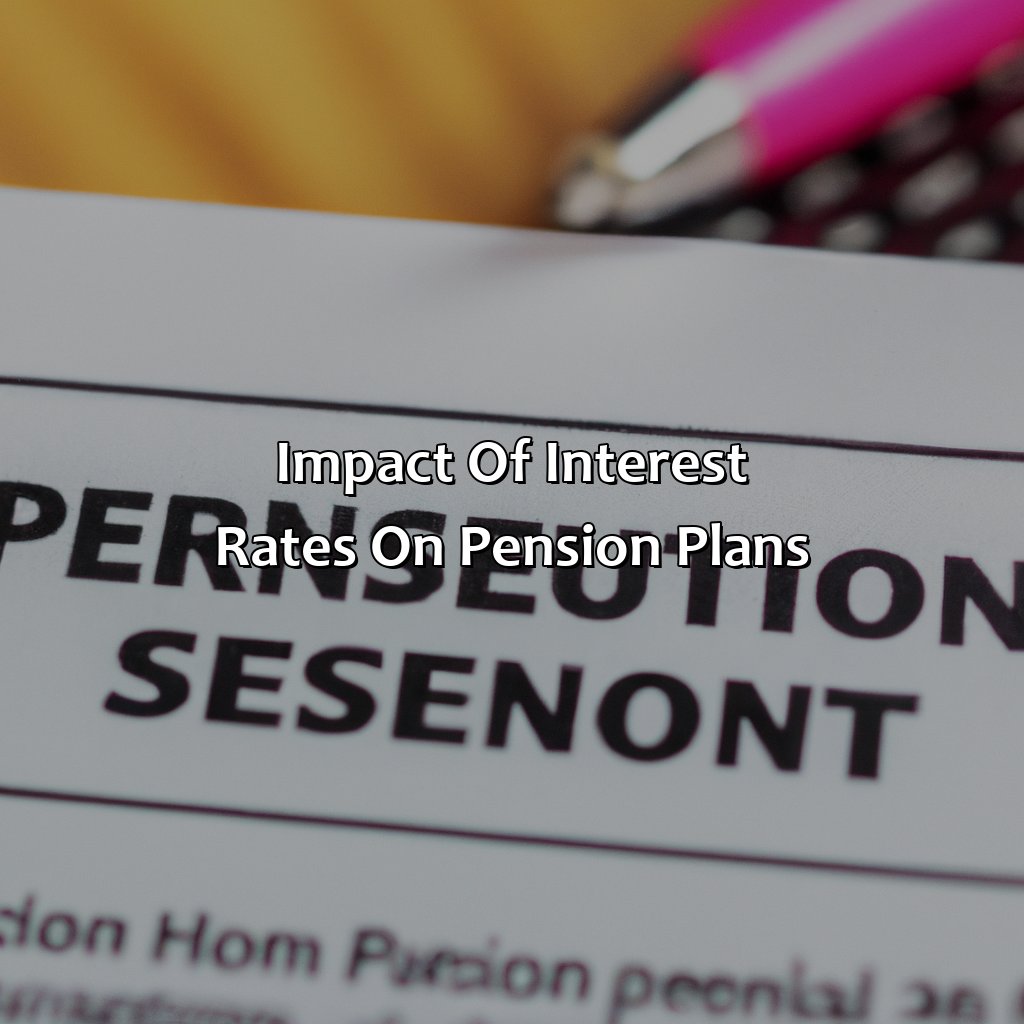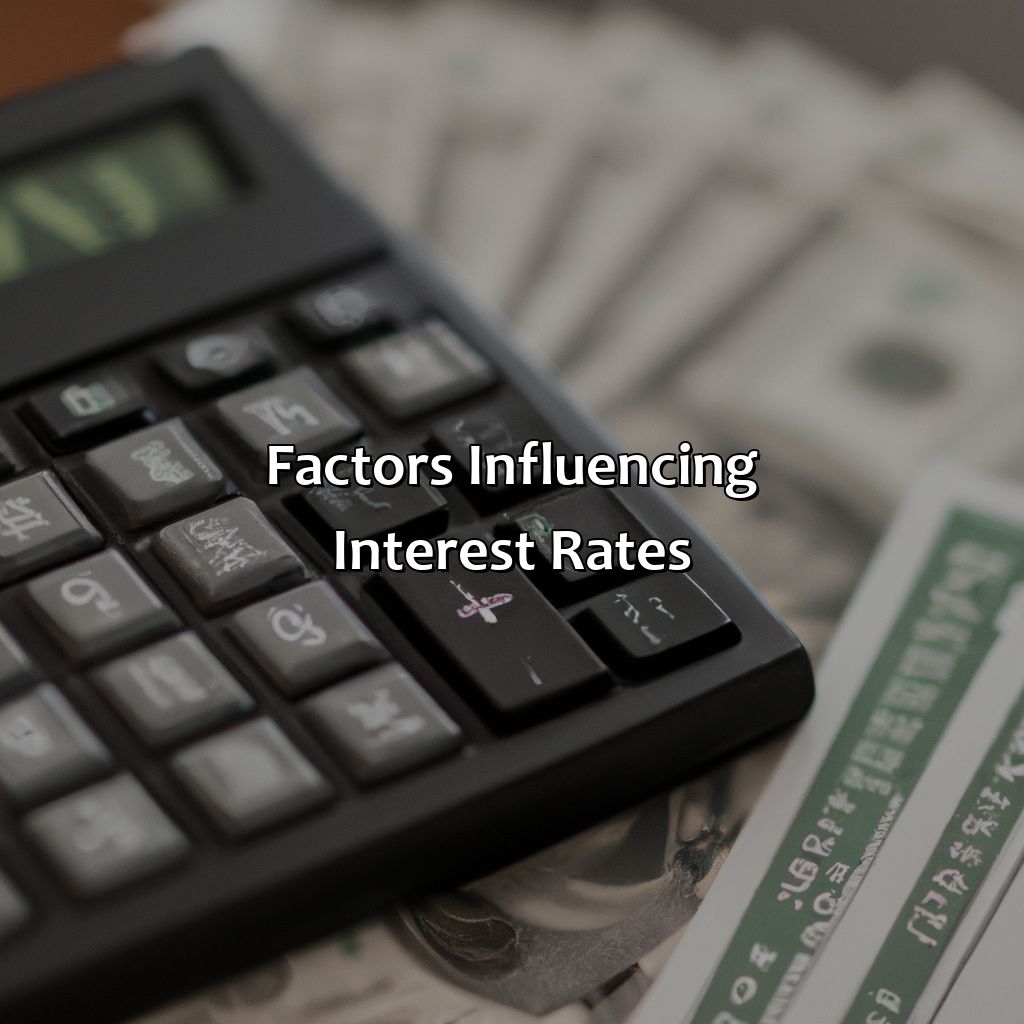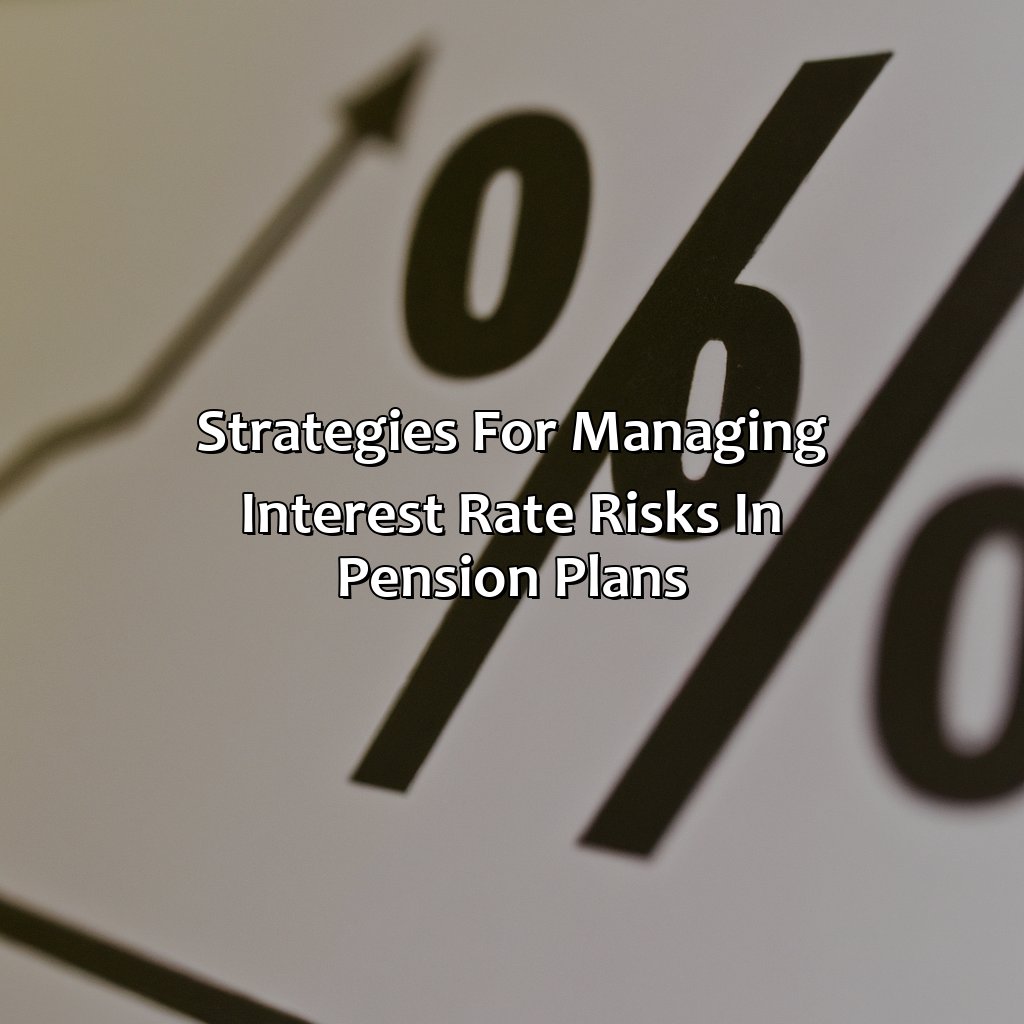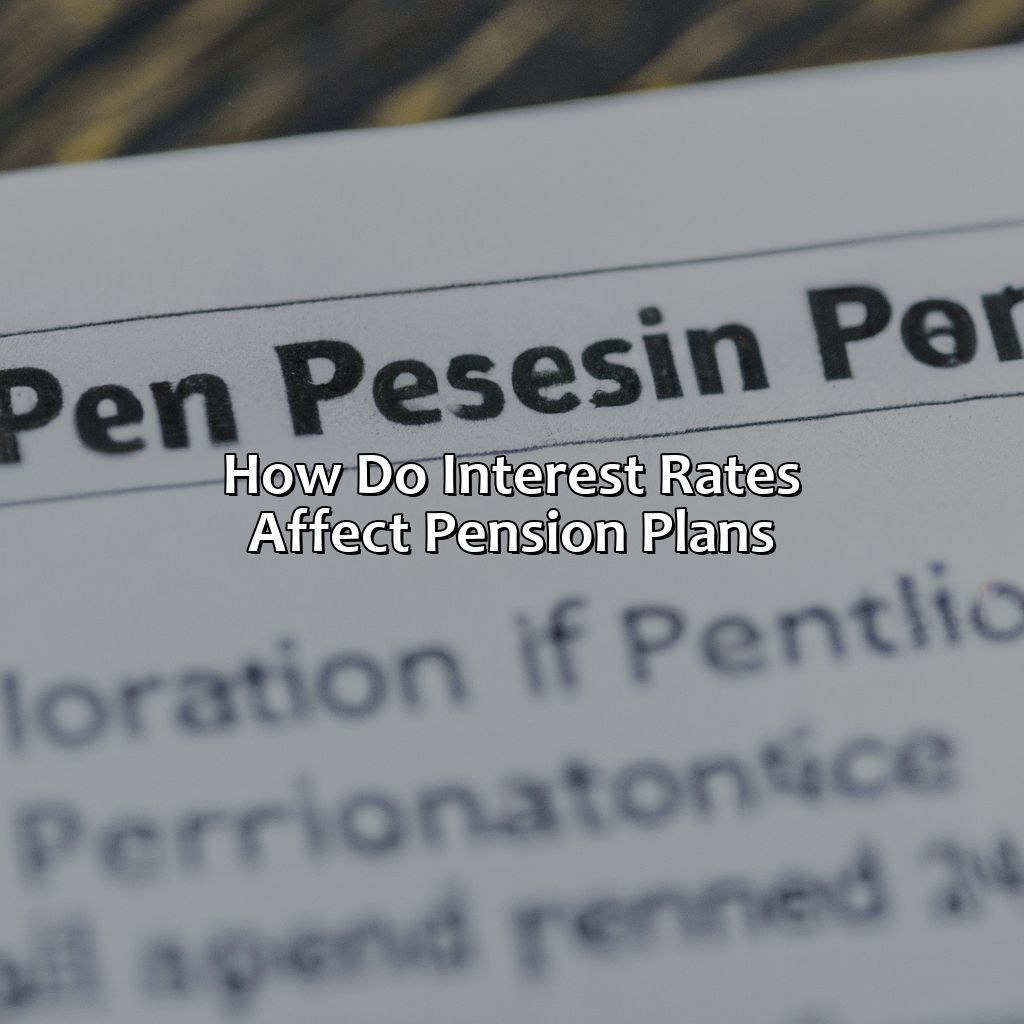How Do Interest Rates Affect Pension Plans?
Key Takeaway:
- Lower interest rates can lead to lower pension payouts: Pension plans are highly sensitive to interest rates. When interest rates are low, the amount of money available to fund pension benefits decreases, resulting in lower payouts for pensioners.
- Higher interest rates can lead to higher pension payouts: Conversely, when interest rates are high, pension payouts tend to increase due to the larger amount of money available to fund benefits. This is beneficial for pensioners but can put a strain on pension plan funding.
- Strategies for managing interest rate risks in pension plans include diversification of investments, matching assets to liabilities, and interest rate hedging: Pension plans can mitigate the impact of interest rate fluctuations by diversifying investments, managing the duration and quality of assets to match expected liabilities, and using interest rate hedging instruments such as swaps and options to lock in rates and manage risk.
Are you concerned about how rising interest rates may affect your pension plan? With this article, you’ll gain insight into how the performance of your retirement savings can be impacted by the interest rate environment. Investigate and equip yourself with the knowledge to ensure long-term financial security.
Impact of interest rates on pension plans
Grasp the effect of interest rates on pension plans. Lower and higher rates impact payouts. Lower rates reduce them. Higher rates increase them. Discover how to adjust for long-term sustainability of your plan.

Image credits: retiregenz.com by James Duncun
Lower interest rates leading to lower pension payouts
Interest rates play a significant role in determining the pension payout that an individual receives. When interest rates fall, the cost of buying an annuity increases, and this leads to lower payouts for retirees. In other words, lower interest rates lead to reduced returns for pension funds, which translates into less income for retirees.
As interest rates are inversely proportional to the present value of future pension payments, lower interest rates significantly impact pension plans. Thus, a reduction in the interest rate means that people need to put more money aside if they want to receive the same amount of retirement income that they would have received with higher interest rates.
It’s worth noting that the impact of interest rate changes varies depending on how a pension plan is structured. Some plans are based on defined benefits where retirees receive predetermined amounts monthly or annually. Others are based on defined contributions where individuals contribute a fixed amount, and their payouts depend on investment performance.
To illustrate just how substantial this impact can be in real-life situations, let’s consider an example. One retiree planned to receive $1000 per month from his employer-sponsored pension plan with a 5% interest rate on annuities when he retired at 65 years of age. If he retired today, with an annual payout calculation basis linked to bonds and current market standards with historically low yields resulting in only 2%, then his expected monthly pension payment would fall drastically by nearly half ($548). As such, it is vitally important to take these factors into account when planning an effective retirement strategy that considers all aspects and outcomes realistically without overconfidence or undue optimism in conditions being prolonged or continuing indefinitely stable.
Looks like Grandma better start planning that trip to Vegas – higher interest rates mean higher pension payouts!
Higher interest rates leading to higher pension payouts
With an increase in interest rates, pension plans tend to provide higher payouts to beneficiaries. This is due to the fact that higher interest rates lead to higher returns on investments made by the pension plan provider. As a result, the accumulated funds available for disbursement as pension payments may increase, leading to larger payouts.
Furthermore, it is essential to note that while higher interest rates may lead to larger payouts, they may also cause an increase in the cost of new pension liabilities. This means that if the plan needs additional funding, it may need more money than before due to increased expenses.
To mitigate this risk, it’s recommended that pension plan providers continue monitoring and adjusting their investment strategies accordingly as interest rates fluctuate. This may involve diversifying their portfolio or seeking out investments with lower risks attached.
Interest rates may be influenced by economic factors, but ultimately they’re just like our moods – unpredictable and prone to sudden changes.
Factors influencing interest rates
Understanding how interest rates affect pension plans is key. So, let’s get into “Factors influencing interest rates“. Three main factors cause interest rate fluctuations. These are Central Bank policies, inflation rates, and economic growth. Knowing these will help us comprehend the impact of interest rates on pensions.

Image credits: retiregenz.com by Harry Woodhock
Central Bank policies
The monetary policies set out by the key governing authorities play a significant role in shaping interest rates across various financial sectors. Specifically, changes in Central Bank guidelines can have profound effects on interest rate fluctuations that can trickle down to affect pension plan structures. The Central Bank’s measures typically aim to either stimulate growth or curb inflation, which can impact borrowing and lending rates and ultimately influence funding mechanisms for pension schemes.
This dependence on Central Bank actions has been a highly-debated topic among financial experts, with many citing concerns around the potential for inconsistent or misaligned approaches to impact economic stability. However, it remains essential for investors and individuals looking to prepare themselves financially through retirement planning to understand how these policies might impact their saving and investment strategies, particularly with regards to lump sum pension plans and interest rates.
One factor that can complicate matters further is geopolitical tensions or events that may create notable market volatility. For example, the ongoing COVID-19 pandemic has led to numerous emergency considerations such as quantitative easing measures by Central Banks worldwide that could alter long-term interest rates. As such, it’s critical to stay informed of external factors affecting policy decisions alongside central bank movements.
In light of these ever-changing landscape conditions, investors must continue making well-informed decisions about their investment portfolios while navigating uncertain times. A wise choice would involve preparing accordingly with proper risk management principles in mind that reflect current events’ dynamic nature. This approach helps mitigate the risks associated with sudden market upheavals in uncertain environments like those we face today in light of the pandemic.
If inflation rates were a rollercoaster, pension plans would be the poor souls stuck in the front row with no seatbelts.
Inflation rates
The impact of rising prices on the economy, otherwise known as the cost of living, can be devastating. As inflation rates increase, goods and services become more expensive thereby reducing purchasing power. This results in an increased demand for higher wages which stimulates inflation even further.
Taking into consideration its effects on the overall economy, it is important to note that inflation rates can have an impact on interest rates. Specifically, high inflation rates may lead to increased interest rates as lenders seek to recoup their losses incurred due to the rising cost of living. On the other hand, low inflation rates often result in lower interest rates.
It is essential for pension funds managers to consider the impact of inflation and corresponding interest rates when developing investment strategies. Failure to factor in these variables may lead to insufficient funding necessary for meeting future obligations.
Furthermore, it is imperative for individuals who have or are planning on establishing pension plans to make informed decisions regarding plan options based on current economic conditions and trends. It’s important to understand how rising inflation and interest rates affect pension funds.
For example, a group of pensioners in Spain were left empty-handed after discovering that their pensions had been invested in bonds linked to Madoff’s investment scheme – which turned out to be a fraudulent Ponzi scheme – leading the investors with nothing but massive financial loss. It emphasizes how much lack of education and knowledge has contributed negatively towards making informed decisions regarding precious investments like pension plans.
Looks like economic growth just became the new Beyonc – everyone’s talking about it but nobody really knows what it means.
Economic growth
The financial health of a country can impact the level of interest rates set by its central bank. As the economy grows, it becomes more attractive for investors who seek higher returns on their investments. This increased demand for borrowing money can lead to a rise in interest rates, causing bond prices to drop and negatively affecting pension plans. Economic growth affects all sectors and is closely monitored globally.
Economic growth has a far-reaching impact on various factors that affect interest rates such as inflation, trade policy, and employment rates. A growing economy signals increased market activities which tends to attract foreign investors seeking higher returns on investments. The influx of foreign investments leads to an increase in demand for local currency, which usually results in an increase in interest rates. This upsurge may lead to lower bond prices, affecting corporate bonds and pension funds.
One unique detail about economic growth is the role it plays in influencing short-term over long-term interest rate policies by the central bank. In response to inflationary pressures caused by economic growth or other macroeconomic factors, central banks may choose to raise short-term interest rates while keeping long-term ones unchanged.
In recent economic history, the world experienced a major economic recession resulting from the 2008 Global Financial Crisis. This crisis had severe impacts on economies around the globe, including high unemployment levels, decreased economic activity leading to reduced revenues for businesses and governments as well as an overall decline in investment activities worldwide. The crisis resulted in significant drops in both short- and long-term interest rates with limited benefits from traditional monetary policies such as quantitative easing; highlighting how economic growth influences larger macroeconomic factors beyond one’s control.
Managing interest rate risks in pension plans is like trying to navigate a ship through a stormy sea with a leaky boat and a faulty compass.
Strategies for managing interest rate risks in pension plans
Managing interest rate risks in your pension plan? Strategies to help! Diversifying investments, matching assets to liabilities and opting for interest rate hedging. We explore each one here.
- Diversifying investments – a great way to spread the risk.
- Matching assets with liabilities – lock in future returns.
- Interest rate hedging – mitigate the impact of interest rates.
All strategies can help manage your pension plan.

Image credits: retiregenz.com by Joel Jones
Diversification of investments
Expanding the investment portfolio to include a variety of assets is essential in mitigating risks and achieving stable returns. By spreading out investments across, for instance, bonds, equities, and real estate, one can reduce the potential harm caused by individual asset classes’ underperformance. This technique of diversifying investments also helps cushion against market fluctuations and protects pension plans from sudden shocks.
Moreover, diversification by geography and industry is another great way to distribute risk effectively. Pension plan managers should opt for local and international stocks across various sectors instead of sticking only to domestic equities or bonds. Diversification ensures no single stock or sector has too much weightage in the total portfolio and that any significant impact on one aspect does not pose severe performance setbacks.
Portfolio managers can further balance assets with differing return characteristics through hedge funds, managed futures or exchange-traded funds (ETFs). Combining actively managed funds with index-related passive funds often proves helpful in avoiding volatility while still exploiting market opportunities.
Employers need diverse investment options to fulfill their fiduciary obligations towards employees concerning fair retirement benefits. Therefore, using effective diversification strategies when investing pension funds enables companies to provide both growth opportunities while maintaining stability for retirement hours.
For instance, taking cues from previous performance benchmarks versus “standard performance measures” help investors ascertain whether specific investment decisions are consistent or inconsistent with their investment practices across different periods.
This wise mantra has enabled investors at United Airlines’ pension fund manager – UAL Corp., navigate markets better than average over the past few years. The company maintains an efficient diversification strategy amounting to around $19 billion today amidst a tough economic atmosphere affecting travel industries worldwide (source: WSJ.com)
Matching assets to liabilities is like finding the perfect partner, but instead of love, it’s all about minimizing risk and maximizing returns.
Matching assets to liabilities
Assets and liabilities matching is crucial for effective pension plan management. By aligning investments with obligations, funds can avoid liquidity issues and meet their payment commitments to retirees. To achieve the optimal match, fund managers rely on quantitative analysis and employ techniques like duration matching, cash flow matching, and immunization to minimize interest rate risk.
Duration matching involves aligning investments’ duration with the expected duration of the future obligation payments to create a liability-driven investment strategy (LDI). Cash flow matching entails building a portfolio of bonds that generate cash flows mirroring the expected liabilities payout schedule. Finally, immunization entails building a diversified bond portfolio structured so that changes in interest rates do not affect the overall value of the holding.
Effective asset-liability matching involves identifying potential sources of risk, understanding investor characteristics and preferences and allocating resources arising from technological trends. Advancements in technology have allowed for more efficient market monitoring systems which help mitigate market risks by providing real-time data insights for trading decisions.
To illustrate these concepts; suppose a pension fund invests significantly in long-term fixed-income securities when long-term interest rates rise. In such a case, if there is sudden inflationary pressure due to unexpected economic conditions, it exposes pension funds holding long-term bonds to significant interest rate risk. Through LDI strategies that manage assets to better match liabilities and implementing suitable derivative overlays; pension funds could reduce their exposure to these risks.
In summary, pension funds face significant long-term liability obligations resulting from unpredictable economic conditions. Matching assets to liabilities is crucial for fund liquidity management and satisfying retiree payouts’ financial obligations. Fund managers employ various techniques such as duration matching or immunization strategies to optimize asset allocation based on quantifiable data analysis models while mitigating potential risks from technological advancements through efficient market-monitoring systems in real-time updates.
Trying to predict interest rate movements is like trying to predict the weather in this unpredictable world – except with pension plans, the stakes are much higher.
Interest rate hedging
Protecting against interest rate fluctuations is a crucial element in managing pension fund risks. Interest rate risk management aims to mitigate the risk of financial losses that may arise when interest rates fluctuate. A well-thought-out interest rate hedging strategy can help clients manage the risks while still pursuing their pension objectives.
In general, an effective way to manage interest rate risk is to construct a portfolio that gives a reliable cash flow with a duration matching liabilities, so that changes in interest rates do not significantly impact the portfolio’s value. This includes buying fixed-income assets like bonds and swaptions or utilizing derivatives such as futures and forward contracts.
It’s important to note that the impact of such strategies may differ depending on factors such as the pension plan’s liabilities, available assets, and its unique characteristics. Thorough modeling, scenario analysis, and stress testing are essential tools given the complexity of many plans today in evaluating how these strategies might work for each fund’s particular case.
Pension funds should also regularly review their interest rate hedging strategy to ensure it remains aligned with their long-term goals. It should be flexible enough to adjust whenever necessary based on contextual situations. Regular reviews would guarantee that underlying assumptions remain relevant especially in a period of low-interest rates.
Some Facts About How Do Interest Rates Affect Pension Plans:
- ✅ Lower interest rates increase the present value of future pension liabilities, which can negatively impact pension plans. (Source: Investopedia)
- ✅ Lower interest rates can also impact the ability of pension plans to generate investment returns, as fixed-income investments typically produce lower returns in a low interest rate environment. (Source: The Balance)
- ✅ Higher interest rates can have the opposite effect, increasing the value of pension assets and making it easier for pension plans to meet their obligations. (Source: Pensions & Investments)
- ✅ Changes in interest rates can also impact the funding status of pension plans, which can affect the amount of contributions required from plan sponsors. (Source: Mercer)
- ✅ The Federal Reserve’s interest rate policy can have a significant impact on pension plans, as it can influence the broader economic conditions in which they operate. (Source: Pension Benefit Guaranty Corporation)
FAQs about How Do Interest Rates Affect Pension Plans?
How do interest rates affect pension plans?
Interest rates play a significant role when it comes to pension plans. The interest rates determine how much money pension funds will earn on their investments and how much money the fund will have available for retirement payouts.
What happens when interest rates decrease?
When interest rates decrease, pension plans may struggle to meet the expected returns on their investments. This can lead to lower retirement payouts or higher contributions from plan sponsors.
Do all pension plans react the same way to interest rate changes?
No, all pension plans do not react the same way to interest rate changes. Defined benefit plans may be more vulnerable to interest rate changes, while defined contribution plans may be less susceptible.
What is the impact of interest rates on pension plan funding levels?
The funding levels of pension plans directly depend on interest rates. When interest rates decrease, the value of plan assets declines. This leads to a decline in funding levels and may require an increase in contributions from plan sponsors.
Can pension plan investments offset low interest rates?
Yes, pension plan investments can offset low interest rates by investing in stocks, real estate, and alternative investments. However, these investments can carry a higher risk.
How can individuals prepare for pension plan changes due to interest rates?
Individuals can prepare for pension plan changes due to interest rates by staying informed about their plan’s funding levels and contribution requirements. They can also save more money outside of their pension plans to ensure they have enough income during retirement.
